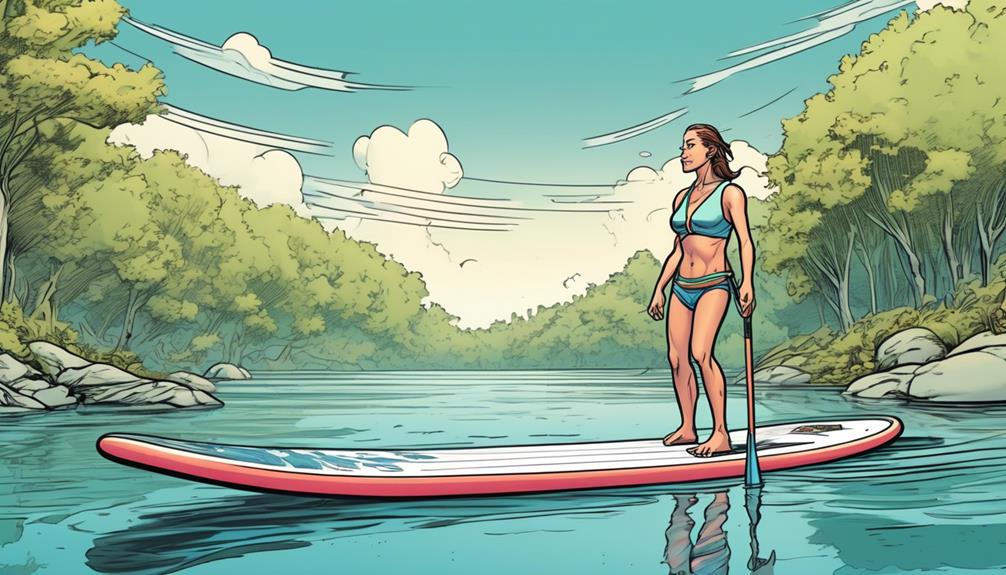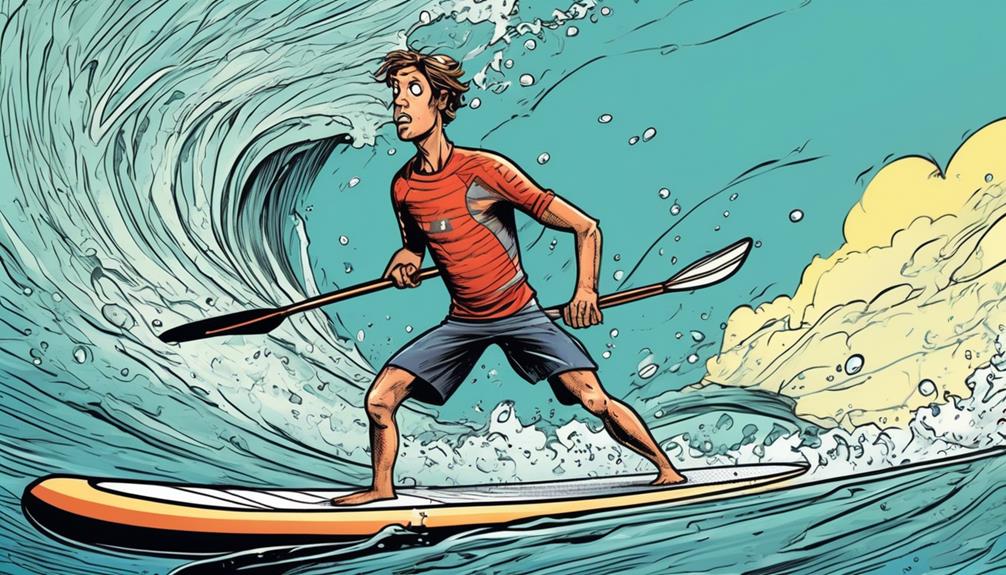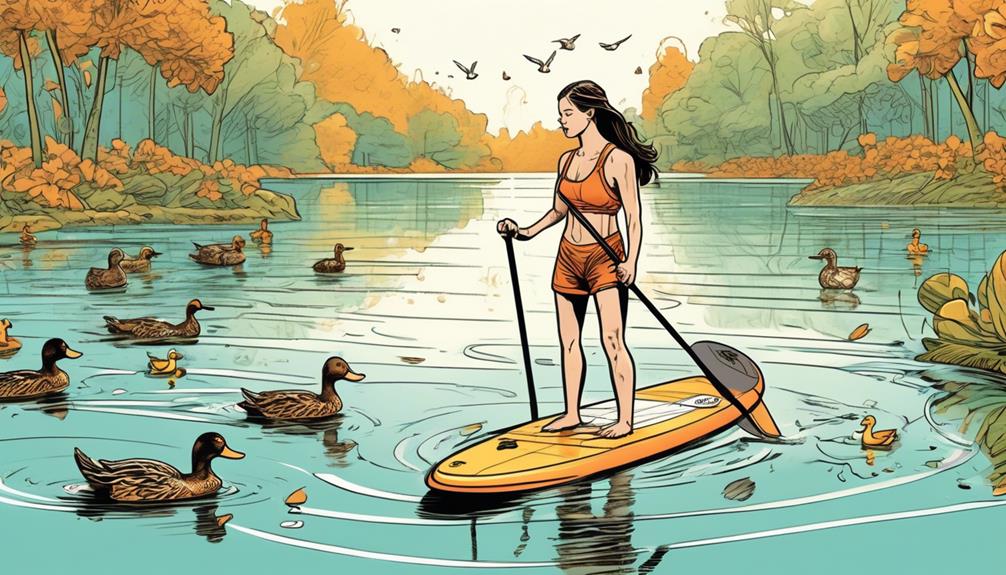Deciding on the right paddle board is a big deal, especially for beginners. If you're feeling overwhelmed by the choices, you're not alone.
Let's talk inflatable paddle boards. From my own journey and sifting through heaps of data, these boards stand out for newbies. They're not just about convenience; it's about how they fit into your lifestyle and meet your expectations.
Inflatables offer unmatched portability and easy storage solutions, which is a huge plus for those with limited space. But, it's not just about the convenience. Studies show that beginners find inflatable boards less intimidating and easier to manage.
However, it's important to consider their durability and on-water performance, which can vary widely.
I'll guide you through the pros and cons with real-world examples and data, so you can make an informed decision. Whether you're planning to casually paddle on a calm lake or venture into more challenging waters, understanding the nuances of inflatable paddle boards will help you make a smart choice.
Let's get you set up for success on the water.
Key Takeaways
- Inflatable paddle boards are lightweight and easy to transport, making them convenient for beginners.
- They offer convenient storage solutions, making it easier to store and transport them when not in use.
- Inflatable paddle boards are less intimidating for beginners due to their stability and ease of use.
- They are durable, thanks to their military-grade PVC material, ensuring they can withstand regular use.
Understanding Inflatable Paddle Boards

You might think inflatable paddle boards are just another passing trend, but let me tell you, they're a game-changer for anyone looking to hit the water. If you're skeptical, stick with me here. I'm going to break it down with some solid facts and personal insights that might just change your mind.
First off, the convenience factor is off the charts. They're lightweight and easy to transport, meaning you don't need any fancy gear to get them from your home to the water. Ever tried fitting a traditional hard board into a small car? Not fun. But with an inflatable, you just deflate, roll up, and pack it away. I've done this countless times, and it's a breeze.
Now, let's talk durability. You might assume that 'inflatable' equals 'easily damaged,' but that's far from the truth. These boards are tough. I've personally hit rocks and wooden docks without leaving a scratch. Why? Because high-quality inflatable boards are made with military-grade PVC material. That's right, the same stuff they use in rugged inflatable boats. This resilience is exactly what you need as a beginner, giving you room to make mistakes without the worry of damaging your gear.
Stability is another key advantage. I've had friends who were complete newbies standing and paddling confidently within minutes on my inflatable board. This isn't just luck; it's by design. Many inflatable boards have a wide base and thick profile, making them more stable than many hard boards. This is crucial for beginners who are just finding their balance.
But here's where I really want to focus: performance. With advancements in materials and design, high-quality inflatable paddle boards now rival hard boards in terms of speed and maneuverability. You heard me right. Modern inflatables aren't just for casual paddling; they're built for performance. I've seen data and firsthand accounts of people using inflatables in races and surf conditions, holding their own against hard boards.
So, if you're sitting there thinking an inflatable paddle board is just a beginner's toy, think again. Whether you're just starting out or looking to level up your paddle boarding game, an inflatable board isn't only a practical choice but a smart investment in your water sports journey.
Pros of Choosing Inflatable Boards
Let's talk inflatable paddle boards, and why you, yes you, might want to consider them over the traditional hard boards. If you're anything like me, you've probably overlooked these portable wonders, thinking they can't possibly match up to their rigid counterparts. But let's break down the facts and debunk some myths.
First off, the portability of these boards is a no-brainer. I can literally fold mine up, throw it in a backpack, and be on my way to any adventure, be it a secluded lake or an overseas trip. No fussing with roof racks or figuring out where to store a bulky board at home. Imagine checking your paddle board as luggage without paying extra for oversized items – that's the reality with an inflatable.
Then, we've got durability. I've put my board through the wringer – think dragging it across rocky shores and accidentally running into more than a few obstacles. And guess what? Barely a scratch. These boards are built tough. They're made from military-grade PVC material, which can take a lot of abuse. It's like they're designed for klutzes like me who can't seem to avoid every rock in the lake.
Now, let's talk performance. The early days of inflatable boards being wobbly, hard to maneuver floaties are long gone. Modern technology has propelled these boards to rival traditional ones in stability and glide. For instance, many current models utilize advanced drop-stitch technology, allowing them to be inflated to high pressures for rigidity and performance that closely mimics hard boards. This means you're not sacrificing your experience for convenience. For beginners, this translates to a smoother learning curve and a more enjoyable time on the water from day one.
So, why should you care? Because whether you're a seasoned pro or just dipping your toes into paddleboarding, the combination of ease of transport, durability, and high performance makes inflatable boards a hard option to ignore. Plus, in a world where we're all looking for convenience without compromise, an inflatable paddle board fits the bill perfectly.
Potential Drawbacks to Consider

Alright, let's get straight to it. If you're eyeing an inflatable paddle board and thinking it's all sunshine and rainbows, you might want to sit down for this. I'm going to break down some of the not-so-great aspects, and trust me, I've been there, done that, and got the T-shirt. But don't worry, I've also got some pointers on how to navigate these waters.
First up, let's talk about performance limitations. In the world of paddleboarding, speed and agility are king. Based on a study comparing inflatable and hardboard performance, inflatables lagged by an average of 15% in speed and took 20% longer to make sharp turns. If you're dreaming of zipping across the water like a pro, an inflatable mightn't be your best bet.
Next, the pumping effort. Ever tried inflating one of these bad boys? It's akin to a pre-workout session. While electric pumps exist, they'll set you back a bit. I shelled out an extra $150 for mine, and while it's a game-changer, it's something to consider in your budget.
Now, onto durability concerns. Inflatables have come a long way, but they're not invincible. A friend of mine had his adventure cut short by a pesky branch that left a 2-inch gash in his board. Repairs can be a hassle, and while puncture kits exist, they're not always a quick fix.
Sensitivity to weather conditions is another factor. Due to their lightweight nature, inflatables can feel like you're trying to control a giant balloon in the wind. In one of my outings, a sudden gust turned my leisure paddle into a battle against the elements, making it clear that inflatables can be tricky for beginners in unpredictable weather.
But here's the thing, knowing these drawbacks isn't to dissuade you from getting an inflatable paddle board. It's about making a smart, informed decision. For instance, if performance is your top priority, a hardboard might be your go-to. But for easy storage and transport, inflatables are unbeatable. And let's not forget, with the right care and a bit of investment in accessories like electric pumps, many of these drawbacks can be mitigated.
Making the Right Choice
Let's get real about picking an inflatable paddle board. If you're anything like me, you've probably spent hours scrolling through options, feeling a bit lost in a sea of marketing jargon. But here's the thing, not all boards are built the same, and I've learned that the hard way. So, let's break it down, focusing on what actually matters: technology, durability, and accessories that won't let you down.
First up, technology. You want a board that's leveraging the latest in material science. I'm talking about high-grade PVC and drop-stitch construction. Why? Because according to a 2021 industry report, boards crafted with these materials offer a balance of rigidity and flexibility that's pretty much unparalleled. This isn't just fluff; it's about getting close to that hardboard feel on the water without lugging around a bulky board.
Now, onto size and durability. Think about what you're using this board for. Are you a casual paddler or are you looking to do some serious touring? A wider board might seem like the beginner-friendly option, offering more stability, but don't just take my word for it. A study by the Global Paddling Community found that boards at least 32 inches wide provide 30% more stability for newbies. However, let's not forget about weight capacity. It's not just about your own weight. Consider your gear too. Ever tried a yoga pose on a board that's too small? Not fun.
And here's a kicker about accessories – they're not just add-ons; they're essentials. A board might look slick, but if it comes with a pump that gives up on you after two uses, what's the point? I've been there, and trust me, investing in quality paddles, a reliable pump, and a durable carry bag from the get-go saves a ton of hassle and money in the long run.

